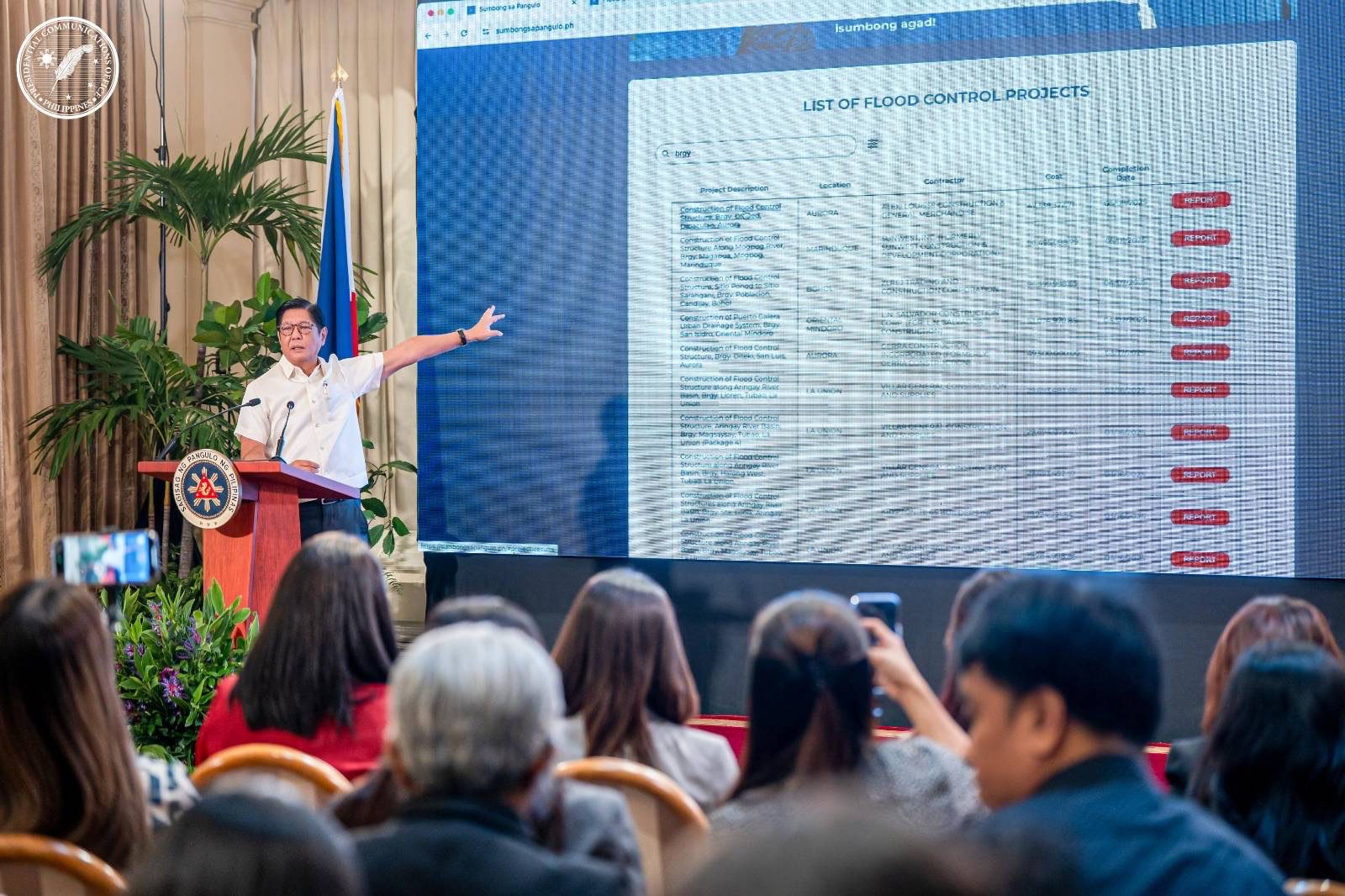
President Ferdinand R. Marcos Jr. launched the “Sumbong sa Pangulo” website on Monday, urging citizens to fulfill their civic duty by directly reporting to him any nonoperational or anomalous flood control projects in their areas.
The website, sumbongsapangulo.ph, was created in line with the President’s order during his fourth State of the Nation Address (SONA) to investigate irregularities in flood control projects in light of repeated widespread flooding during the typhoon season.
President Marcos said the government would take action against all those found to be involved in corruption and embezzlement of public funds in flood control projects.
In a press conference in Malacañan Palace on Monday, President Marcos underscored the public’s important role in the investigation, noting that ordinary citizens are most affected by flooding.
“We need the citizens to play their part, their civic duty to report to the government what they see as being wrong,” President Marcos said.
“Lahat ng hinaing ninyo- masama loob ninyo, nagrereklamo kayo, frustrated kayo dahil nakikita ninyo wala naman kayong malapitan. Ito na ‘yung chance ninyo. Mayroon na tayong website,” the President added.
“Ang isusulat ninyo doon sa report, ako mismo ang babasa. ’Yan ang asahan ninyo, babasahin ko bawat isa,” President Marcos stressed.
The Chief Executive said the website is accessible and easy to use.
“Basta ilagay ninyo ‘yung barangay ninyo at lalabas na lahat ng flood control project,” President Marcos said.
Based on the Department of Public Works and Highways (DPWH) report, around 9,000 flood control projects have been undertaken in the past three years.
The President said the investigation would greatly benefit from information provided directly by concerned residents, including photos and videos.
“So, that’s why we are asking people to help us and to help themselves. Dahil kung maaayos natin ito, hindi na sila babahain o at least not as badly as they are now,” said President Marcos.
The website features an interactive map that allows the public to locate flood control projects in their area, either by using the search box or by clicking on the color indicators displayed on the map.
The website categorized the projects by year of completion using color coding.
Details provided for each project include project name, approved budget, contract cost, legislative district, contractor, exact location, start date, funding year, and completion date.

